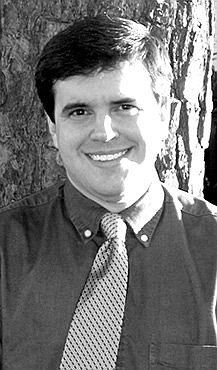Ottaway W. Gurley was an Arkansas man with a dream of success. The son of slaves, he would become a multi-millionaire and one of the richest African-Americans in the country. He would also helped create the prosperous Greenwood District in Tulsa, known as "Black Wall Street," until it all came crashing down in 1921.
Gurley was born on Christmas Day 1868 to freed slaves in Huntsville, Alabama. Shortly afterward, the family moved to Pine Bluff, where Gurley grew up. Pine Bluff offered many opportunities for the freedmen of Arkansas with a new state college established for African-Americans, schools and a growing business community. He was intelligent, ambitious, and determined. He attended local schools and worked as a school teacher for a time in the latter 1880s. He married in 1889 and began working for the post office.
Gurley knew that in spite of the relatively comfortable life he had built, his options were limited in the South. Like many Americans of the time, he looked to the west for his future.
In September 1893, the federal government opened up six million acres of Cherokee lands in the northern part of the Indian Territory (modern-day Oklahoma). Gurley and his wife were among 100,000 participants in the land rush, and Gurley staked a claim near the city of Perry, a mostly black community.
Though the lands had just been seized from the Native American tribes, many African-American leaders saw the potential to build their own communities in a new land, hopefully free from segregation and the influences of the Jim Crow South. Gurley worked tirelessly to develop his land and his business interests. He ran and lost a race for Noble County Treasurer but nevertheless persisted and came to own a prosperous store and became principal of the local school.
In 1905, with oil booming in nearby Tulsa, Gurley sold everything and bought a small tract on the north end of the city. He started a grocery store and subdivided his tract for residential and business development. The street began to be called Greenwood Avenue after the city in Mississippi. He started a rooming house which he expanded into a hotel and began several other businesses. He built several buildings and homes and soon became a multi-millionaire, worth possibly as much as $50 million in 2021 dollars.
As more African-Americans came to Tulsa, Gurley's establishments became the center of the growing business community. The area began to be called the Greenwood District, but the prosperity of the neighborhood and the success of so many black business owners led to it being called "Black Wall Street." Though segregation was now the law in Oklahoma, the area was thriving and self-sufficient and eventually included a hospital, newspapers, churches and schools. With fellow businessman J. B. Stoddard, the pair had created an economic marvel.
Gurley eventually became Deputy Sheriff for Tulsa, as he worked with the mostly white city government and police force. Tensions were growing in the city nevertheless, with reports of lynchings across the state had increased by 1921. When a black man was accused of raping a white woman in late May, a mob surrounded the local jail demanding retribution. Fearing a lynching, a group of armed Greenwood residents marched to the jail to protect the accused. Gurley attempted to negotiate with white leaders to try to prevent an outbreak of violence, but his effort failed. Fights broke out around the jail, and a riot ensued -- one that would engulf Greenwood.
On June 1, white mobs formed and attacked the neighborhood, beating and murdering as they marched up one street after another. The whole district was set aflame. Some witnesses even reported that airplanes were used to drop gasoline bombs on homes and businesses. Gurley watched his own buildings burn and barely escaped with his life.
In the end, more than 250 people were dead, and the Greenwood District was in ruins. Many of the bodies were never recovered. Most of the residents fled in a panic as one block after another succumbed to vicious mobs and unrelenting fires. In the final indignity, the remaining black residents of the district were marched out of Tulsa at gunpoint by members of the Oklahoma National Guard, with some briefly interned in camps outside the city. It was not until decades later that the State of Oklahoma even acknowledged what had happened or even attempted to compensate property owners for their losses.
But with his dreams in ashes and his fortune gone, Gurley moved further west. He and his wife eventually reached Los Angeles, where they spent their remaining years running a modest hotel in the South Central neighborhood. Gurley died in 1935.
Dr. Ken Bridges is a professor of history and geography at South Arkansas Community College in El Dorado and a resident historian for the South Arkansas Historical Preservation Society. Bridges can be reached by email at kbridges@ southark.edu.
